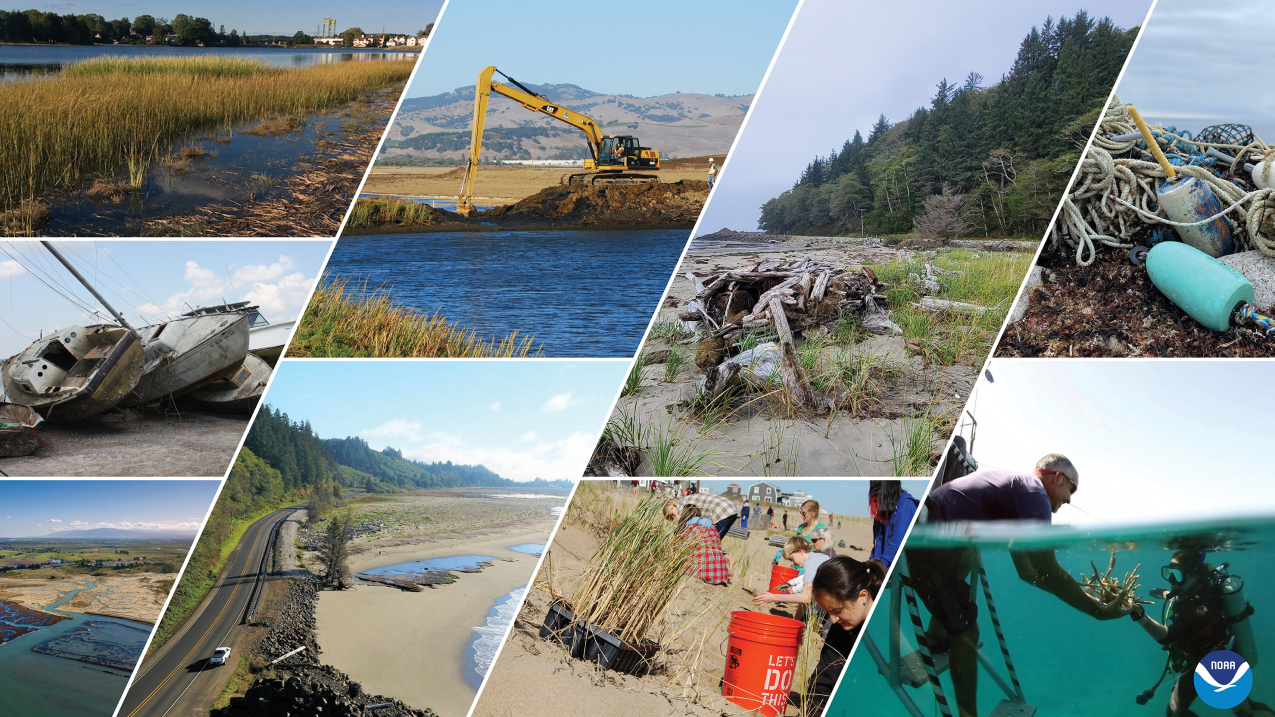Rhode Island
Rhode Island Poised to Take Early Role on High-Speed Rail Study

CHARLESTOWN — Years after a proposed “Kenyon to Old Saybrook” high-speed-rail bypass through areas like the historic district of Old Lyme and and Stonington’s Olde Mistick Village sparked public outcry in Connecticut, few realize the pivotal role that a tiny Rhode Island town played in stopping the plan, or at least delaying it until now.
“We found out but it was almost by accident,” said Ruth Platner, a resident of Charlestown, R. I., a town of about 8,000 people.
Platner said that in early December 2016, she and her husband, Cliff Vanover, happened to be watching television and saw Rhode Island Sen. Jack Reed being interviewed about NEC Future – the Federal Railroad Administration’s plan for investment in the Northeast Corridor.
“He was so happy that the plan that they had chosen didn’t miss Providence. We were listening and going, ‘Well, where’s it gonna go?” said Platner, a member of the Charlestown Citizens Alliance, which at the time held a majority of the seats on the local town council.
Platner said that the current rail corridor has two significant curves in Charlestown. On the bypass map, the new straight track bypasses those two curves – slicing through the 1100-acre Carter Preserve, the Burlingame Wildlife Management Area, the 100-acre Stoney Hill Dairy on Shumankanuc Hill Rd., Narragansett Tribal land and the historic Amos Green Farm, as well as Columbia Heights and Kenyon, which she said are both eligible for listing on the National Register.
Opposition grew as word spread. On Jan. 10, 2017, more than 400 residents showed up for a presentation by Amtrak in protest of the plan, filling the auditorium at Charlestown Elementary School.
The Town Council wrote to then-Governor Gina Raimondo opposing the plan and asking that Amtrak maintain its current right of way.
The council sent similar letters to Reed, Rhode Island Sen. Sheldon Whitehouse, and Congressman James Langevin. By Jan. 17, their state senator and state representative had signed a letter in opposition to the bypass. On Jan 19, a coalition of members of the town councils of Charlestown and Westerly, members of the Narragansett Tribe, and residents of both towns, met with Gov. Raimondo’s chief of staff and other members of her cabinet, as well as staff from Whitehouse’s office and Langevin’s office.
A breakthrough came on Jan. 26, 2017, when Gov. Raimondo released a statement that she was in favor of keeping Providence as part of the Northeast Corridor plan, but she would not support the bypass. The day before she had met privately with Charlestown and Westerly town council members and state legislators, the same day a “Drop the Bypass” rally was held at the R.I. State House rotunda.
On July 12, 2017, the Record of Decision was released. The bypass was shelved, but the Federal Railroad Administration left the route between New Haven and Providence unresolved, calling instead for a New Haven to Providence Capacity Planning Study. When that study would begin, no one was sure.
A seat at the table
Kim Coulter, owner of Stoney Hill Dairy Farm in Charlestown was one of the most passionate protesters of the bypass proposal. The project would have passed directly through her farm, and included the construction of a train tunnel.
“The tunnel runs right through the property, right through the middle, it wipes us out,” she told CT Examiner. “My barns [would be] no longer standing, it goes right under my home, directly under my home.”
Her family has owned the farm for four generations, she said, and uses sustainable practices like pasture rotation.
“We raise beef cattle, we have dairy cattle, we raise turkeys, chickens, broiler hens, hogs, and we grow our own feed, our own hay. We do pasture rotation – we’re a sustainable farm. We believe in sustainable agriculture. We compost our manure, we put it back into the field for fertilizer. Do we have to bring in lime and whatnot to you know, correct the pH of course. We do have to do that. But we pride ourselves on being sustainable. We pride ourselves in keeping the animals out of the wetlands,” she said.
Coulter said that property owners were not included in the planning process the first time around. This time she is pushing for inclusion in the planning stages of the capacity study – but opposes the idea of revitalizing the bypass.
“Shouldn’t we have some say before it goes too far, and the taxpayers’ dollars that’s paying for all of these studies? So if it’s going to impact the Carter Preserve, community homes, farmland, tribal land, shouldn’t we be seated at the table to have a voice and to say, hey, wait a minute, we’re spending a lot of money on a certain plan than was already opposed several years ago. Do we want to spend all this money on that same plan that’s going to get the same reaction? Is there a better way to do this? Is there a more efficient way to spend taxpayer dollars to come up with a better study, a better proposal?”
She acknowledged that the Northeast Corridor rail infrastructure needs to be upgraded but said the money could be used in a better way than building the bypass.
Coulter questioned whether the destruction was justified, adding that once land is taken and developed, it cannot and will not be put back into its pre-construction form.
“We’re not making land anymore… Once it’s gone, it’s gone. There’s no replacing it. People talk about climate change and they want to protect the environment,” she said. “You can’t have it both ways – either you protect the environment, or you destroy the environment – which is more important to you.”
She said she is angry that the bypass is being considered again.
“This is rearing its ugly head again,” Coulter said. “Just to go through and tear up conservation land, tribal land, farmland and just homes in general, I think is terribly irresponsible, especially in this day and age. I just can’t buy into it. Are we going to be loud again opposing it? Yes, we are.”
‘We’re in constant communication’
Since about 2021, Deb Carney, president of Charlestown’s Town Council, has communicated once a month by email with Peter Alviti, Director of the Rhode Island Department of Transportation, who also represents the state on the Northeast Corridor Commission. Included on the email are members of Alviti’s staff, the Charlestown Town Council, State Sen. Elaine Morgan, State Rep. Tina Spears, Kim Coulter, owner of Stoney Hill Farm, and others.
“We always reiterate that Charlestown has concerns around the New Haven and Providence Capacity Planning Study and our concerns that there might be any resurgence from the old proposal,” Carney told CT Examiner.
Carney said the initial email to Alviti’s office laid out all of the town’s concerns about the original proposal – including building track that would go “through farmlands, tribal lands, conservation land and people’s houses, which Carney said would be a huge detriment to Charlestown.
“There was one section of it that was supposed to go underground, which of course would have been a problem and for the extreme cost and not saving any time. None of it and the complete disruption of people’s lives. It just made no sense,” she said.
Carney said that in the Nov. 19, 2022, email, Pamela Cotter, who is administrator of planning at Rhode Island Department of Transportation, mentioned that RIDOT officials met with Amtrak officials on Nov. 2 “mostly to discuss operational items but the study came up briefly in the discussion.”
Carney said she asked if it was possible to include a representative from Charlestown next time there was a discussion of the bypass. Carney told CT Examiner that Cotter said she would discuss Charlestown’s request with Amtrak and get back to her.
“That was in December, so that’s where we are. We’re staying on top of it. We’re in constant communication,” Carney said.
When asked for a statement on Alviti’s stance on high speed rail and particularly the bypass, Charles St. Martin, chief of public affairs for the Rhode Island Department of Transportation, responded in an email, “Amtrak presented their New Haven to Providence Capacity Study. Discussions are in their initial phases. Amtrak will provide robust public engagement to vet this concept. RIDOT will help in any way possible to ensure that Rhode Islanders can have significant input throughout this process,”
‘It doesn’t make sense’
Platner said that considering the high cost of planning and building the project, the Federal Railroad Administration should be able to find another solution.
“It’s just to get someplace faster – and it’s not a lot faster. It’s not an acceptable trade off, I don’t think,” she said.
Platner said another issue is that the Amtrak’s high-speed train, Acela, does not stop at Kingston – which at three miles away is a station she could bicycle to.
“The nearest stops are in Providence or New Haven. Unless you live near the Acela stop. it doesn’t really make sense because then you have the added time of commuting to that Acela stop. It’s basically to connect the urban areas,” she said. “It’s business travel. Also after the pandemic, everyone now has the ability to have a Zoom meeting. I don’t know why you would travel from New York City or Providence to go to a meeting. I don’t think it’s as necessary as it was.”
She said that the project would “sacrifice all of the wildlife refuges and the Pawcatuck River so that people can get to Providence faster.”
“If the outcomes are that bad, and there are other [alternatives], they need to find another solution that’s not so disruptive. And again, the amount of money they’re spending on the planning and what they have spent and all of the engineers involved, they have to come up with a better plan.”
She said that with the original plan, Charlestown Town Council along with Richmond and Hopkinton and a number of other towns received a letter that contained a link to the plan but not a copy of the plan.
“It was just a letter that said they were increasing services… they just made it sound like they were gonna have wider seats,” she said. “From the letter you couldn’t tell what it was that they were doing. You had no idea and who would have guessed that they would do this?”
She said the construction itself would be disruptive and destructive, probably lasting for years, especially with the excavation and grading required.
Platner said that since 2017 the general public knowledge of the project has dissipated.
“What’s happened now is a lot of people have moved away and new people have moved in. I was contacted by someone who bought a home in Kenyon without knowing anything about this, and then wanting to find out about it. So people are moving into the previous path of the train where it was proposed without any knowledge,” she said. “A lot of the knowledge that was here is gone and now there’s new people moving in who don’t know what’s going to happen.”

Rhode Island
How to watch/stream: Rhode Island at the Little League Softball regional championship
Cranston Western Little League Softball is on the doorstep of reaching the national tournament.
The Rhode Island state champions reached the New England regional finals with a 6-5 comeback win vs. Massachusetts on Wednesday. And now the Ocean State team plays in the winner-take-all championship in Bristol, Connecticut at noon.
If you can’t make the drive to see Rhode Island’s best, you can still watch from afar.
Stream links and television information for the championship vs. Connecticut is below.
How they got there: RI is off to the Little League Softball regional title game
How to watch the New England Little League Softball championship
Date: Friday, July 26
Time: Noon
Location: A. Bartlett Giamatti Little League Leadership Training Center in Bristol, Connecticut
Stream: ESPN
Previous matchup: Rhode Island topped Connecticut, 13-3, in the opening game of the New England tournament. The Ocean State tacked on eight runs in the bottom of the fourth that broke open a 5-3 game. RI piled up eight hits and 11 RBIs in the big win.
jrousseau@providencejournal.com
On X: @ByJacobRousseau
Rhode Island
NOAA, Biden-Harris Administration announce nearly $2 million for Rhode Island project as part of Investing in America Agenda

Today, Secretary of Commerce Gina Raimondo announced that the Department of Commerce and NOAA have recommended nearly $2 million for a project in Rhode Island to make the state’s coast more resilient to climate change and other coastal hazards. The awards are being made under the Biden Administration’s Climate Resilience Regional Challenge, a competitive, $575 million program funded through the nearly $6 billion total investment under the Biden-Harris Administration’s Inflation Reduction Act.
“As part of President Biden’s commitment to combating the climate crisis, we are investing $575 million to help make sure America’s coastal communities are more resilient to the effects of climate change,” said U.S. Secretary of Commerce Gina Raimondo. “As part of this historic investment in our nation’s climate resilience the Biden-Harris Administration is investing $2 million to help underserved communities in Rhode Island develop and implement new strategies to protect themselves from increased flooding, storm surge, and extreme weather events.”
Administered by the Department of Commerce and NOAA, the Climate-Ready Coasts initiative is focused on investing in high-impact projects that create climate solutions by storing carbon; building resilience to coastal hazards such as extreme weather events, pollution and marine debris; restoring coastal habitats that help wildlife and humans thrive; building the capacity of underserved communities and support community-driven restoration; and providing employment opportunities.
“This historic funding is vital for helping Rhode Island communities confront the unique coastal challenges posed by a changing climate,” said NOAA Administrator Rick Spinrad, Ph.D. “The recommended project will empower Rhode Islanders to better prepare for climate change, fostering a more resilient, equitable future for these coastal communities.”
The recommended project in Rhode Island includes $1,999,777 for work with the Aquidneck Land Trust in partnership with the municipalities of Newport, Middletown, Portsmouth and Naval Station Newport. The project, Growing Regional Resilience Coordination on Aquidneck Island, capitalizes on the momentum of resilience initiatives already underway on the island. Committed to conserving the island’s open spaces and building on prior successful projects (including the conservation of over 2,800 acres), the land trust will use this opportunity to grow their island-wide approach to resilience, offering technical assistance, capacity building, and actionable strategies for responding to climate change. Implemented projects will include nature-based solutions to address threats from flooding, increasing storms, extreme temperatures, drought, sea level rise and water pollution.
“Coastal communities are on the front lines of climate change and face unique climate challenges – from flooding to water pollution to sea level rise. This federal funding will help the Aquidneck Land Trust and its partners work collaboratively to strengthen their collective resiliency to the impacts of climate change. I applaud their cooperative approach to mitigating the impacts of climate change for future generations and look forward to seeing the results of their work in these Rhode Island communities,” said Senator Jack Reed.
“Thanks to our Inflation Reduction Act, we’re accelerating climate resiliency across the Ocean State,” said Senator Sheldon Whitehouse, who helped shape major climate provisions included in the Inflation Reduction Act. “This federal funding will provide a big boost to resiliency and conservation projects on Aquidneck Island and help strengthen our defenses against climate change.”
“As the Ocean State, coastal management is essential to protecting our communities and our way of life from the existential threat of climate change,” said Congressman Gabe Amo (RI-01). “That is why I am proud to have joined my colleagues in supporting the Aquidneck Land Trust in their quest to receive more than $2 million in federal funding. This federal investment will help expand their island-wide approach to resilience and leverage nature-based solutions to fight the climate crisis.”
Additional information is available on the Climate Resilience Regional Challenge website.
Climate, weather, and water affect all life on our ocean planet. NOAA’s mission is to understand and predict our changing environment, from the deep sea to outer space, and to manage and conserve America’s coastal and marine resources.
Rhode Island
Special Olympics Rhode Island, Topgolf start unified sports program | ABC6

PROVIDENCE, R.I. (WLNE) — Special Olympics Rhode Island and Topgolf Rhode Island launched a unified sports program.
The 12 week program features 16 teams practicing weekly at the Topgolf facility in Cranston, and will end with a tournament on Aug. 22.
“Thanks to incredible businesses such as Topgolf, who share our commitment to inclusion and believe in the limitless power of sports and play, the hopes and dreams of our athletes become a reality,” President and CEO of Special Olympics Rhode Island Ed Pacheco said.
More information of Special Olympics R.I. can be found here.
-

 World1 week ago
World1 week agoOne dead after car crashes into restaurant in Paris
-

 Midwest1 week ago
Midwest1 week agoMichigan rep posts video response to Stephen Colbert's joke about his RNC speech: 'Touché'
-

 News1 week ago
News1 week agoVideo: Young Republicans on Why Their Party Isn’t Reaching Gen Z (And What They Can Do About It)
-

 News1 week ago
News1 week agoIn Milwaukee, Black Voters Struggle to Find a Home With Either Party
-

 Politics1 week ago
Politics1 week agoFox News Politics: The Call is Coming from Inside the House
-

 News1 week ago
News1 week agoVideo: J.D. Vance Accepts Vice-Presidential Nomination
-

 Movie Reviews1 week ago
Movie Reviews1 week agoMovie Review: A new generation drives into the storm in rousing ‘Twisters’
-

 World1 week ago
World1 week agoTrump to take RNC stage for first speech since assassination attempt


/cdn.vox-cdn.com/uploads/chorus_asset/file/25547838/YAKZA_3840_2160_A_Elogo.jpg)











